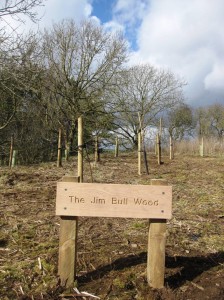On Saturday 12 April a small group gathered in Northumberland to pay tribute to Jim Bull, who worked for the Council (later Campaign) for National Parks for over 26 years.
Part of this tribute included planting twenty native trees which, in time, will form a small wood, just off the Hadrian’s Wall National Trail near Milecastle 42 at Cawfields. This will be known as the Jim Bull Wood.
The group included many people who had worked alongside Jim and was very ably assisted by Paget Lazzari and the National Park ranger team. Thank goodness they had dug the holes beforehand, making the job of planting the trees and attaching protective guards much easier and quicker.
The rangers couldn’t have suggested a more perfect spot to plant the trees – tucked away off the National Trail and with road access, with a bubbling stream flowing nearby and birdsong all around.
The day allowed us all time to remember Jim, with anecdotes, memories and extracts from a Swinburne poem (the garden of Prosperine):
From too much love of living,
From hope and fear set free,
We thank with brief thanksgiving
Whatever gods may be
That no life lives for ever;
That dead men rise up never;
That even the weariest river
Winds somewhere safe to sea.
























